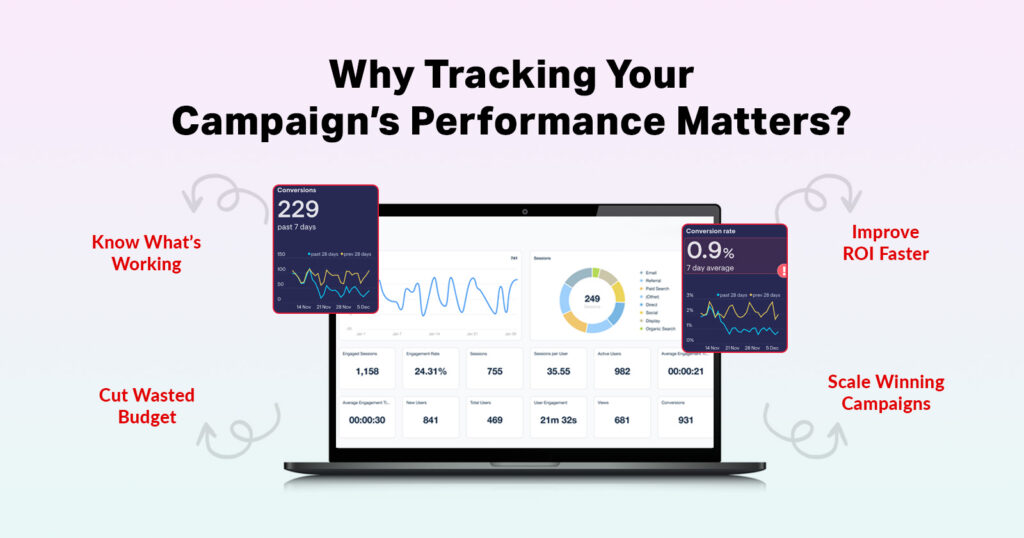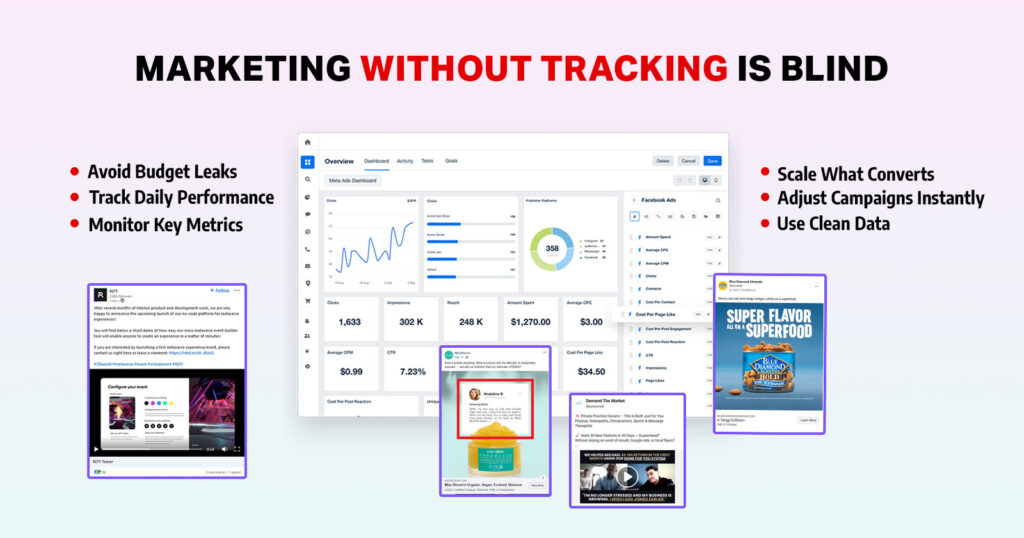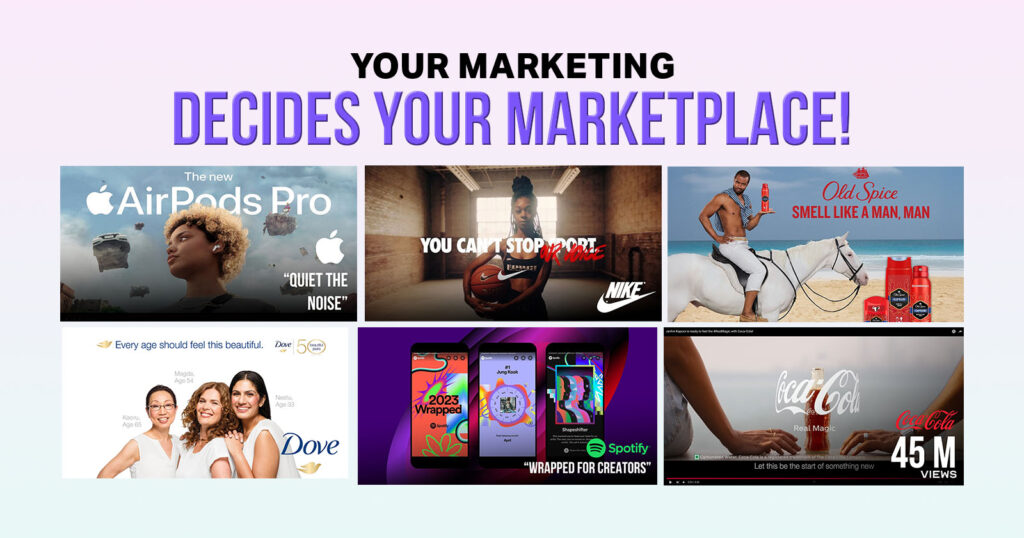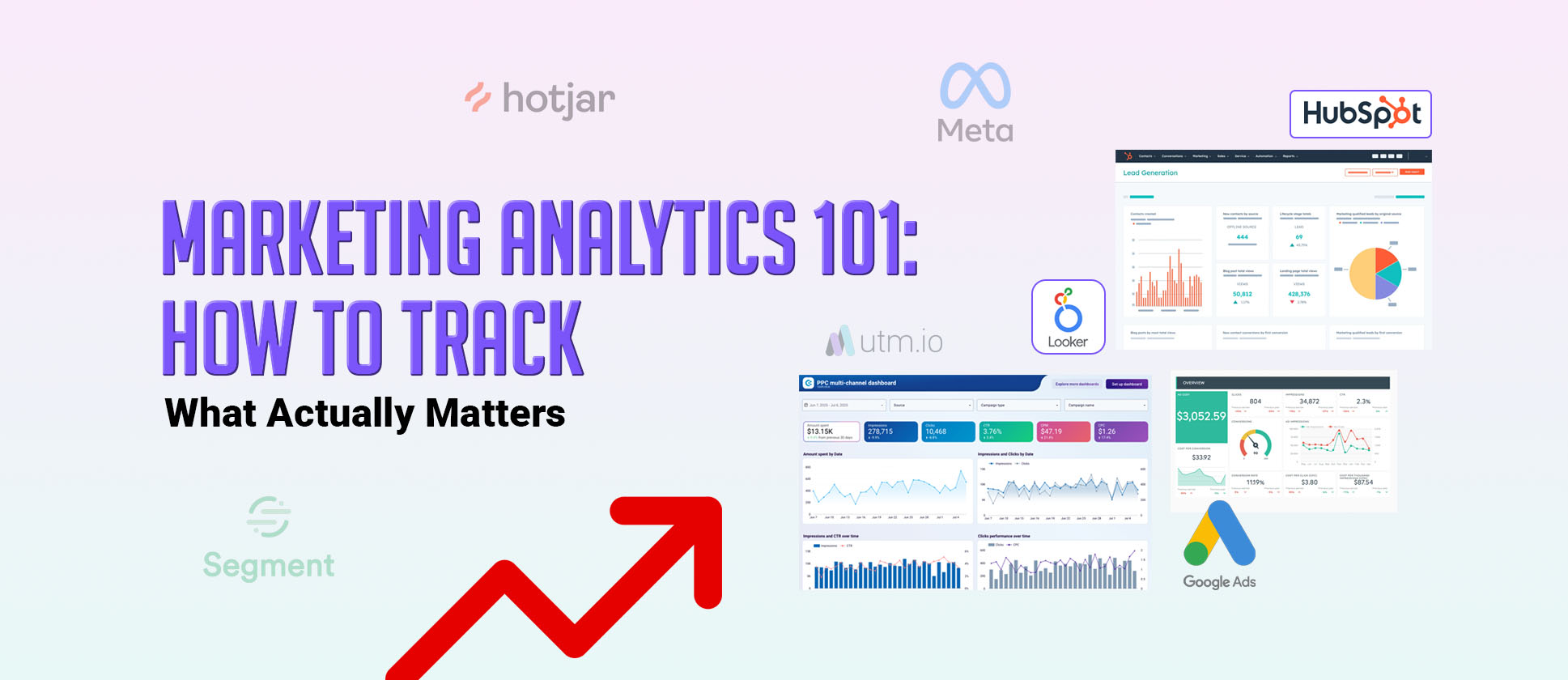If there’s one phrase that gets every marketer excited and nervous at the same time, it’s marketing performance. You know exactly why because it decides whether your campaigns are delivering growth or just burning money. At ShortVids Unlimited Video Editing, where good editing fuels stronger brand storytelling, we have seen firsthand how tracking your marketing performance can turn campaigns into predictable growth machines. Everyone today wants proof that their marketing investment is paying off, and without the right tools to measure results, even the Best Marketing Campaigns can feel like guesswork.
The truth is, tracking is only the beginning. Real impact comes when data is analyzed and used for improvements, not just talked about in meetings. Businesses that know how to optimize their marketing performance metrics are already ahead of the curve. Think of how Netflix keeps refining recommendations or how Amazon keeps testing new Ad Ideas, you can bet none of that happens without performance analysis.
So in this blog, we’re breaking down the complete journey: tracking, analyzing, and improving your marketing performance with real-world examples, easy tools, and strategies that work for everyone from startups to established brands.
What Is Marketing Performance and Why Does It Matter Today
Without measuring performance, businesses are guessing in the dark. Understanding marketing performance is basically about asking one clear question: How effective are your campaigns in creating measurable impact? It involves analyzing how well marketing strategies contribute to brand growth, revenue, leads, and customer engagement. This hack will instantly scale Your Video Marketing campaign.

When marketers talk about performance, they are not only talking about numbers; they are talking about customer trust, brand identity, and a roadmap for improvement. Brands that treat marketing like a science and not just an art are the ones that grow steadily in uncertain markets.
For example, Coca-Cola uses performance data to figure out which social campaigns are getting people talking and which ones are falling by the wayside.
Performance Basics
At the very core of marketing performance tracking lies data. This data doesn’t just tell you what happened but also why it happened. For instance, when Nike noticed higher engagement during their storytelling-heavy campaigns, they weren’t surprised that the numbers proved that emotionally charged ads worked better than purely promotional ones. That insight is the result of performance basics done right.
Business Impact
Apple tracks both brand lift and conversion metrics before every major iPhone launch. They already know which campaigns result in store traffic and which Paid Ads push online pre-orders. This kind of analysis helps them allocate billions in global ad spend effectively. Good performance tracking also highlights how marketing contributes to sales and revenue.
Customer Insights
Performance analysis is also about learning what your customers care about most. Spotify, for instance, uses listening data not just to personalize music, but also to fuel marketing messages like “Spotify Wrapped” that get shared worldwide. This proves that customer behavior is always the real story behind performance data.
How To Do Effective Marketing Performance Tracking in Real Time
Real-time marketing performance tracking has become a necessity because today’s campaigns change by the minute. Without live data tracking, businesses risk wasting money on campaigns that don’t scale. If one ad has a high click-through rate today, it might underperform tomorrow.
Companies such as Amazon live and breathe real-time tracking. Every sale on their platform is tied back to digital ads and remarketing triggers. They don’t wait weeks; they track instantly and adjust daily. The truth is, even smaller businesses can do this easily with tools like Google Analytics and Meta Ads Manager.

Tracking Tools
Useful tools for tracking include Google Analytics for website behavior. These tools give insights into impressions, engagement, traffic flow, and conversions all in one view. HubSpot for lead nurturing, and Meta Ads Manager for ad spend performance.
Data Accuracy
Without accuracy, results like CAC (Customer Acquisition Cost) and ROAS (Return on Ad Spend) will be misleading. Of course, tools only matter if the data is accurate. You need clean event setups, correct goals, and UTM parameters for campaign tracking.
Real Examples
Our own work at ShortVids with Gene Slade, founder of Lead Ninja, proves how accurate tracking makes all the difference. Running Meta ads for his coaching brand with a budget between $2000 to $3000, we used tracking to optimize lead forms and inquiries. In return, Gene consistently pulls $10-12k a month with about 20-30 quality inquiries every single day. Without detailed tracking, the outcome would never have been that predictable.
Learn Top Video Marketing Agencies in 2025
What Marketing Performance Metrics Are Most Important For Success
Metrics are the backbone of marketing performance analysis. Instead of tracking everything under the sun, choosing the right marketing performance metrics makes sure you’re measuring what truly matters.
Brands like Airbnb learned this lesson early, instead of focusing only on traffic. Once they aligned marketing metrics with business goals, their campaigns started becoming more predictable in driving revenue, and they started tracking booking conversions as their metric of success.

ROI Metrics
These metrics focus on financial results and determine whether marketing campaigns are actually profitable.
- ROAS (Return on Ad Spend) – Shows how much revenue is generated per dollar spent on ads. For example, Meta (Facebook) campaigns average a ROAS of 2.9× across industries, though sectors like beauty often reach above 4×.
- CPA (Cost per Acquisition) – Tells you how much it costs to acquire one customer via a campaign. On average, a CPA hovers around $7–$8 but may increase in competitive industries like finance or technology.
- CAC (Customer Acquisition Cost) – Similar to CPA but broader, factoring in sales costs alongside marketing. Low CAC means businesses are acquiring customers efficiently.
- LTV (Customer Lifetime Value) – Measures total revenue a customer generates during their entire relationship with the brand. When LTV is significantly higher than CAC, campaigns are considered financially sustainable.
- RPC (Revenue per Click) – A profitability-centric metric that reveals how much money is earned for every ad click, helping brands balance spending against earnings.
Engagement Metrics
Engagement metrics reflect how actively audiences interact with your campaign content. They provide strong signals about brand awareness and loyalty.
- CTR (Click-Through Rate) – Percentage of people who clicked on your link after seeing it. A higher CTR shows strong ad relevance and messaging.
- CPC (Cost per Click) – Amount paid for each click on your ad. A low CPC generally means efficient targeting and creative relevance.
- Engagement Rate – Tracks likes, shares, and comments relative to impressions. It helps identify how emotionally engaging content is.
- Impressions – Reflects how many times your content was displayed, even if it wasn’t interacted with.
- Reach – Refers to the actual number of unique people who saw your content. Reach ensures campaigns are not just being shown but spread to new potential buyers.
- Ad Frequency – Reveals how often one person sees the same ad. While high frequency improves recall, oversaturation can hurt engagement.
Higher Retention directly boosts visibility and algorithmic favor. For example, short videos (<5 min) typically aim for 50–70% average view duration, while longer videos succeed with 40–60%.
Conversion Metrics
Conversions are the ultimate indicator of whether campaigns translate into meaningful results like signups or purchases.
- Conversion Rate – Percentage of website visitors who complete a desired action, like buying a product or subscribing. On Shopify, the average is 1.4–1.8%, while elite performers see rates above 4.7%.
- Bounce Rate – Percentage of visitors who leave a page without interacting further. Lower bounce means stronger relevance and landing page quality.
- Time on Page – Indicates whether people are engaging with your landing content or exiting too quickly. A longer time suggests higher relevance and persuasive messaging.
- Lead-to-Customer Rate – Helps evaluate lead nurturing quality by showing how many leads actually convert into paying customers.
For instance, Shopify merchants rely heavily on conversion rate benchmarks. Desktop visitors convert at nearly 1.9% compared to mobile at ~1.2%. Leveraging omnichannel strategies like email retargeting increases conversion rates by nearly 30%.
How To Use Marketing Performance Analysis For Better Decisions
Marketing performance analysis is about going beyond the numbers to find meaning, patterns, and actionable steps. Performance data means nothing unless it’s analyzed.
For example, Netflix does more than track how many people watch a show. They analyze what made people binge three episodes in a row, at what time of day they watched, and which characters drove more engagement. That analysis is why their recommendations feel so accurate.
Data Interpretation
Numbers alone are never enough. By connecting metrics with business context, trends become insights. For example, if traffic is increasing but conversions are not, the analysis tells you there’s a landing page or offer issue.
Growth Patterns
Tracking growth patterns often reveals hidden opportunities. TikTok became a global giant not because every creator had massive reach, but because data showed the power of micro-viral videos in every niche.
Campaign Learnings
Every campaign should end with documented learnings. Learning what didn’t work is just as valuable as learning what worked. At ShortVids, we always create post-campaign reviews to refine editing strategies for better storytelling.
What Strategies Improve Marketing Campaign Performance Long Term
Improving marketing campaign performance requires experimentation, consistency, and audience-first thinking. While tracking is about “what,” strategy is about “how.”
Budget Planning
Brands like Unilever treat budget planning as a science. By 2024, their brand and marketing expenditures rose to roughly 15.5% of sales, amounting to about €9.4 billion, a €900 million increase from prior years. Strategic budget planning creates long-term competitive advantage. They allocate spend across multiple product lines but always leave room for testing new creatives.
Creative Testing
Airbnb leverages constant experimentation to uncover what connects across user segments. In fact, they employ controlled experiments at multiple stages, from design to algorithms to drive decision-making and innovation. One case study involving advertising highlighted how Airbnb tested different video creatives across “dreaming” vs “planning” audience segments on YouTube. By doing so, they effectively identified the most impactful messaging strategy for each stage of travel planning.
Landing Pages
According to HubSpot, nearly two-thirds of marketers report their average landing page conversion rates remain below 10%. No amount of good ads can fix a poor landing page. Marketers who ignore this are leaving money on the table.
How Leading Brands Improve Marketing Performance With Examples
The best proof of performance power comes from big names that run billion-dollar campaigns.

Coca-Cola story: Coca-Cola mastered performance by focusing on emotional storytelling. Campaigns like “Share a Coke” were based on performance insights that people loved personalization. The result was billions in free social mentions.
Spotify story: Spotify built Spotify Wrapped, turning personalized data into a yearly cultural event. That campaign not only boosted brand love but also created free viral growth. That analysis turned into marketing magic.
How To Build A Data-Driven Process For Marketing Performance Improvement
Success comes from building a loop where numbers lead to insights and insights lead to action. For consistent marketing performance improvement, businesses must treat data as a living process instead of a one-time task.
- Consistent tracking – Regular updates make sure KPIs stay visible at all times. Tools like Google Data Studio create automatic dashboards that refresh daily, so teams can catch trends before small issues turn into big problems.
- Regular reviews – Monthly or quarterly performance reviews give space to adjust strategy instead of blindly scaling. Companies like Procter & Gamble are known for reviewing at short intervals and shutting down weak campaigns quickly.
- Action planning – Data is wasted without clear action steps. This means setting new Ad Creatives, adjusting budgets, or redesigning landing pages. Every change should connect back to the insights discovered in tracking and reviewing.
What Tools Best Support Marketing Performance Tracking and Analysis
Choosing the right tools is the foundation of marketing performance tracking and analysis. Without them, even the best campaigns become guesswork. These platforms not only provide visibility but also help you Build Businesses and scale with confidence.

Analytics Platforms
Google Analytics remains the global powerhouse for tracking website traffic and user behavior, used by more than 55% of websites worldwide, which is about 37.9 million sites in 2025. It allows businesses to uncover where visitors come from, how they navigate, and where they drop off.
HubSpot dominates marketing analytics for CRM and lead nurturing with nearly 36.7% market share, making it ideal for teams balancing sales pipelines with campaign tracking.
Mixpanel, holding around 10.8% of the analytics market, is especially strong for product-focused businesses since it monitors real-time user interactions and funnels in detail.
Ad Managers
Approximately 76% of marketers currently have or will soon adopt Marketing Attribution capabilities to track paid campaign ROI effectively.
Meta Ads Manager gives advertisers detailed insights into how campaigns perform across Facebook and Instagram, from click-through rates to conversions. This can help you gain Mastery over Facebook Ads. It’s favored for precision targeting and attribution reporting.
Google Ads Dashboard complements this by tracking search and display performance, ensuring that every advertising dollar can be tied directly to customer actions.
Dashboard Tools
Looker Studio (formerly Google Data Studio) simplifies reports by integrating data from multiple sources and presenting it in customizable dashboards. It’s a go-to choice for daily performance snapshots.
Segment helps unify customer data across platforms so businesses can see the complete journey from first touchpoint to final conversion.
Hotjar adds another layer by capturing behavioral analytics through heatmaps and recordings, showing what audiences actually do on pages instead of just numbers.
For those managing several campaigns at once, AgencyAnalytics and Tableau are invaluable; they make it easy to visualize results for multiple channels in one central space.
Here’s a quick side-by-side comparison:
| Tool | Key Use |
|---|---|
| Google Analytics | Website traffic & behavior tracking |
| HubSpot | CRM & lead nurturing |
| Mixpanel | Product and funnel analytics |
| Meta Ads Manager | Social ad performance tracking |
| Google Ads Dash | Paid search & display ad management |
| Looker Studio | Custom reporting dashboards |
| Segment | Customer data unification |
| Hotjar | Behavioral analytics (UX insights) |
| AgencyAnalytics | Multi-client and multi-channel reports |
| Tableau | Advanced data visualization |
Your Takeaway!
Marketing that only looks creative without performance tracking is like driving blindfolded. But when tracking, analysis, and optimization combine, campaigns turn into growth engines. Leading names from Spotify to Coca-Cola have proven it, and so have everyday entrepreneurs like Gene Slade who grow steadily with precise ad tracking. At ShortVids, we’ve seen how stronger content plus smart analysis always produces results. For brands today, the path is clear: Track carefully, analyze wisely, and improve consistently. This approach guarantees measurable impact instead of risky guessing. And here’s the good part: you do not need to be a giant like Netflix to start. You just need tools that work, strategies that adjust, and the commitment to let marketing performance improvement drive every decision.
Frequently Asked Questions
Marketing performance is the process of measuring how well your marketing strategies drive results in terms of revenue, leads, conversions, and customer engagement. It matters because tracking performance ensures you are not wasting ad spend and allows you to scale campaigns that deliver the best ROI.
Key marketing performance metrics include CTR (Click‑Through Rate), CPC (Cost Per Click), CPA (Cost Per Acquisition), ROAS (Return on Ad Spend), CAC (Customer Acquisition Cost), LTV (Customer Lifetime Value), and Conversion Rate. Together, these KPIs show you efficiency, profitability, and long‑term growth potential.
The easiest way to begin marketing performance tracking is to use tools like Google Analytics, Meta Ads Manager, and HubSpot. Start by setting UTM parameters for campaigns, defining clear conversion goals, and monitoring key performance indicators (KPIs) such as traffic, conversions, and engagement rates.
Top tools include Google Analytics for website traffic, Meta Ads Manager and Google Ads Dashboard for ad campaigns, HubSpot for lead nurturing and CRM, Hotjar for behavioral insights, and Looker Studio for custom dashboards. Tools like Segment and AgencyAnalytics help unify and visualize data across multiple platforms.
Book a Call Today
- Fixed monthly plans starting at $999
- 24-hour turnaround time (or less) on all short-form edits
- 3-layer quality check system on every video
- No more chasing freelancers or managing editors
- Scale up to 50+ videos/month without hiring in-house
- Content team trained on platform trends, scroll-stopping hooks & storytelling
- Fully managed by professionals – you just upload & approve
- Response time: Under 1 hour (US & GCC time zones)
Cut your production costs, not your standards.


